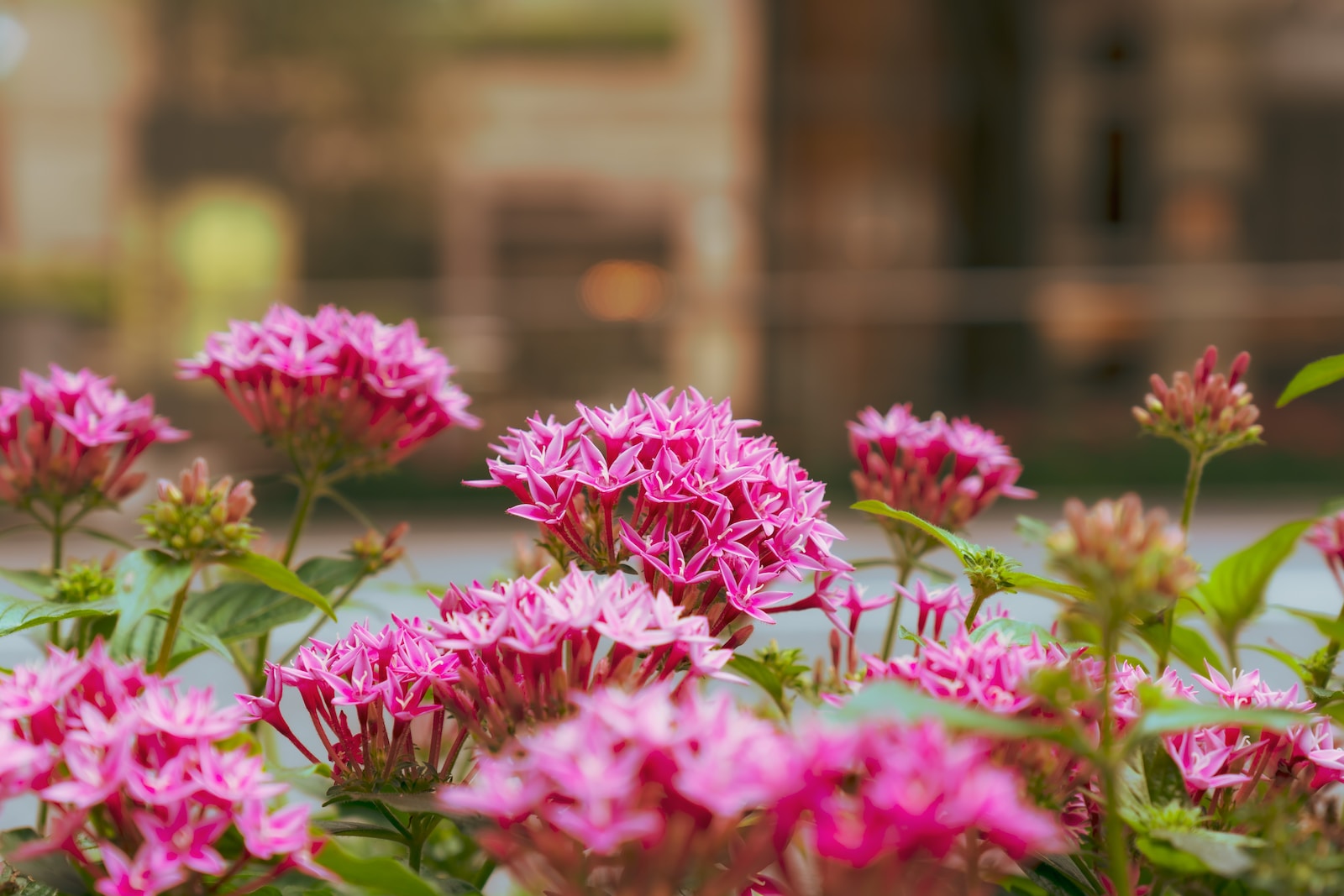Pentas, known for its vibrant clusters of star-shaped flowers, is a must-have for tropical and subtropical gardens. Often referred to as the Egyptian Star Cluster, this plant produces a continuous display of blooms throughout the year, attracting butterflies, hummingbirds, and bees. With over 40 species, Pentas offers a variety of colors, including red, pink, white, and lavender, providing flexibility in garden design.
Native to eastern and northern Africa and the Arabian Peninsula, Pentas is admired for its versatility and ability to thrive in different climates. It can be grown as a perennial in warmer zones and as an annual in cooler regions. The low-maintenance nature of Pentas makes it suitable for borders, containers, or mass plantings.
The attractive foliage of Pentas adds to its appeal, with lance-shaped leaves that create a lush backdrop for the vibrant flowers. Whether used to create a vivid focal point or to add a splash of color in a mixed planting, Pentas is a reliable choice for a wide range of garden settings.
| Aspect | Details |
|---|---|
| Common Names | Pentas, Egyptian Star Cluster, Star Flower |
| Botanical Name | Pentas lanceolata |
| Family | Rubiaceae |
| Plant Type | Perennial (in warm climates), Annual (in cooler) |
| Mature Size | 1-3 feet tall and wide |
| Sun Exposure | Full Sun to Partial Shade |
| Soil Type | Well-drained, Moist, Rich Soil |
| Hardiness Zones | 9-11 |
| Native Area | Eastern and Northern Africa, Arabian Peninsula |
Pentas Care
Pentas care is relatively straightforward, appealing to gardeners seeking a splash of color with minimal fuss. Regular watering, proper sunlight, and well-drained soil are key to a thriving Pentas plant. They also appreciate being deadheaded, which encourages continued blooming.
Fertilizing Pentas is beneficial, but not overly complicated. A balanced, slow-release fertilizer applied in the spring should suffice for the entire growing season. In regions where Pentas grows as a perennial, some winter protection may be necessary to ensure its survival.
Light Requirement for Pentas
Pentas performs best in full sun to partial shade. While it can tolerate some shade, excessive shading may lead to leggy growth and reduced flowering. In areas with intense summer heat, some afternoon shade can help protect the plant.
Soil Requirements for Pentas
Pentas prefer well-drained, moist, and rich soil. A mixture of loam or sandy soil with organic matter, such as compost, can create the ideal growing environment. Avoid heavy clay soils that retain too much water, as they can lead to root rot.
Water Requirements for Pentas
Regular watering is essential for Pentas, especially during hot and dry spells. While the plant enjoys moisture, it doesn’t tolerate waterlogged soil. Allowing the soil to dry slightly between watering while avoiding complete drying is recommended.
Temperature and Humidity
Pentas are tropical plants and prefer warm temperatures. They can tolerate brief cold snaps, but sustained freezing temperatures will kill them. Humidity levels aren’t typically a concern, but in particularly dry climates, misting may be beneficial.
Fertilizer
A slow-release, balanced fertilizer applied in early spring will support Pentas’ growth. Over-fertilizing can lead to excessive foliage at the expense of flowers, so moderation is key. An additional boost with a liquid fertilizer during blooming can enhance flowering.
Pruning Pentas
Deadheading spent blooms encourages continuous flowering. Pruning back leggy growth or pinching back the tips can maintain a bushy habit. In regions where Pentas is perennial, cutting back in late winter can promote new growth.
Propagating Pentas
Pentas can be propagated through stem cuttings or division. Stem cuttings can be taken in late summer, while division can be done in spring or fall. Both methods provide an easy way to multiply Pentas in your garden.
How To Grow Pentas From Seed
Growing Pentas from seed is a rewarding but slow process. Seeds should be started indoors 8-10 weeks before the last frost or sown directly in the garden after danger of frost has passed. Keep the soil moist and warm to encourage germination.
Common Pests & Plant Diseases
Aphids
These small insects can be treated with insecticidal soap or neem oil.
Whiteflies
Whiteflies can be managed by spraying with insecticidal soap.
Mildew
Maintaining proper air circulation and avoiding wet foliage can prevent this fungal disease.
Common Problems With Pentas
Yellowing Leaves
Caused by overwatering or poor drainage. Adjust watering and ensure proper soil conditions.
Leggy Growth
Often a result of insufficient light. Move to a sunnier location if possible.
Poor Flowering
Can be due to over-fertilization or lack of sun. Adjust fertilizer and sunlight as needed.
Pro Tips
- Plant Pentas near patios or windows to enjoy the butterflies and hummingbirds they attract.
- Mix Pentas with other tropical plants for a lush, exotic garden look.
- Utilize Pentas in containers for an easy and vibrant accent on decks or balconies.




